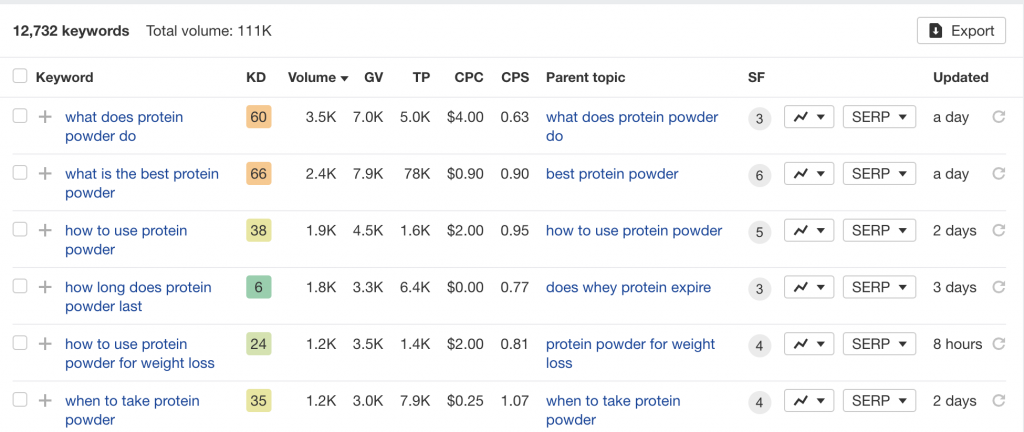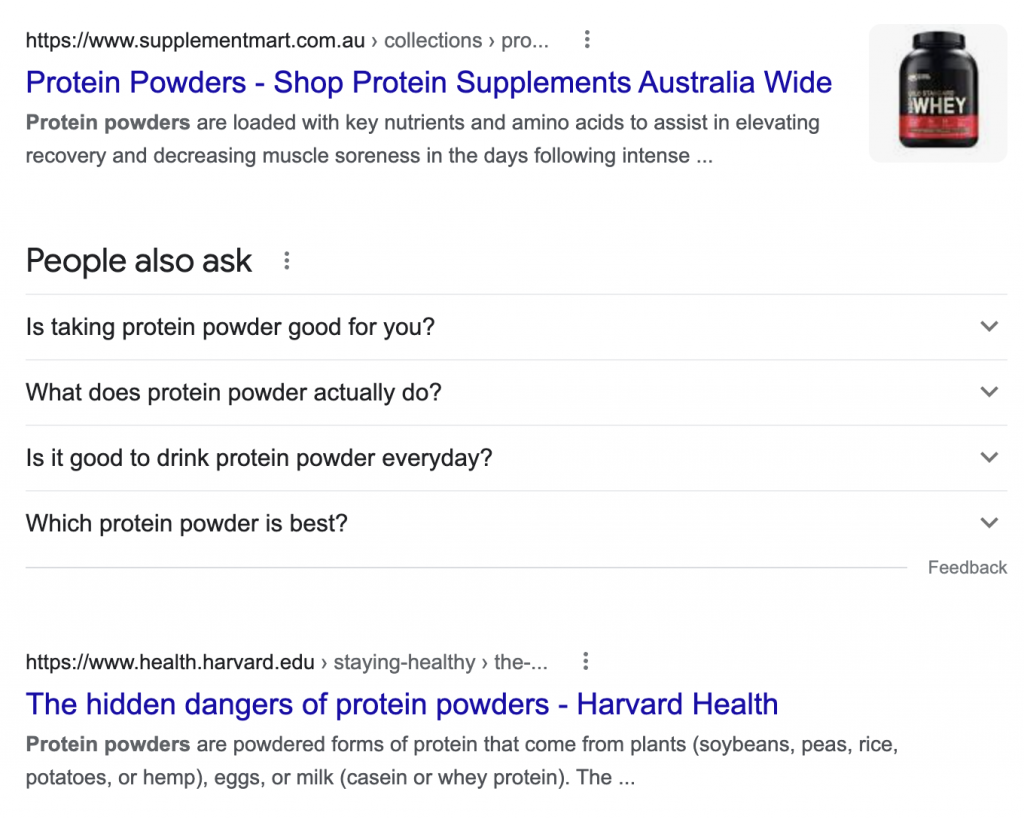What is keyword research?
As an SEO specialist, you should know a lot about keyword research and how to use the different tools that are out there.
By using keyword research tools like Semrush’s Keyword Magic Tool, Ahrefs Keyword Explorer, Google Keyword Planner, or Moz Pro, you can figure out which keywords will have the biggest effect on your content’s ranking.
With this knowledge, you can adjust the language used in your content accordingly to ensure that it reaches its maximum potential market reach.
Finding the Right Keywords
To find the right keywords, start with the broad topics most relevant to your website. Type those topics into Google’s search bar, and pay attention to the suggested searches. These suggested searches give you an idea of what your target customers are searching for and can be used as a starting point for your keyword research.
Another way to find the right keywords is to use keyword research tools. These tools are designed to make gathering keywords more efficient and help you stay organized. Some popular keyword research tools include Centori, Google Keyword Planner, and others.
Make sure to use keyword modifiers to enhance your searches for keywords in search engines.
Why is keyword research important?
Keyword research helps you identify the words and phrases people use when searching for your products or services, enabling you to create content that the right people will see. It also provides insights into what topics are trending in your industry so you can stay ahead of the competition and ensure your content is always relevant.
Understanding user intent is essential for successful SEO efforts, and keyword research enables you to do just that – understand what users are looking for when they type in a query on Google. By understanding user intent, you can optimize your pages accordingly, ensuring visitors find exactly what they’re looking for on your website.
With keyword research, businesses can learn more about the people they want to reach and make better marketing plans. They can also find out which keywords have a lot of searches but not a lot of competition, so they can easily compete with bigger companies that already have a strong online presence. In the end, keyword research helps companies make campaigns that are more relevant to the needs and wants of their target audience.
So now that we’ve got an understanding of what keyword research is here’s a step by step on what to do after keyword research.
What is the next step after keyword research?
1. Organize & Prioritize Your Keyword Lists
Organizing your keywords into lists and mapping them to your website’s content is essential in developing a successful search engine optimization (SEO) strategy.
This helps you understand which keywords are relevant to your website and which pages on your site should target those keywords. By grouping keywords into related themes or topics, you can ensure that the content on your website is optimized for the correct terms and will be more discoverable by your target audience.
An easy way is to take your raw list of keyword and run them through a keyword tool, example below in Ahrefs’ Keyword Explorer:

This also identified the Parent Topic, useful for understanding what topic your keyword falls under and related keywords.
Prioritizing your keywords based on your best opportunity to rank is essential for an effective SEO strategy. This means evaluating which keywords have the highest potential for ranking well in search engine results pages (SERPs) and focusing your optimization efforts on those terms. You can use tools like Google’s Keyword Planner or Moz’s Keyword Explorer to assess keyword difficulty and determine which phrases have the highest potential for ranking success.
How do you prioritise?
Simple way is to use a tool to check difficulty score, and volume.
In the example below, this is a low difficulty keyword, great right, well it’s also low in volume.

On the flip side we have a high volume and high difficulty keyword below:

Both a great keyword to go after, but what we need to find is the sweet spot where there’s a keyword with good volume, and easy to compete for.
There’s a lot of formulas out there for this, here’s a simple one that takes the volue and divides it by the difficulty score, which will shoot out a number between 0 – 1 as a score of it being an ideal target keyword to go after:
Keyword Volume / Difficulty^2 / 1002. Check Your Keywords in Search Engines Results
The best way to understand the keywords you’ve chosen, what intent is behind them is to plug them into a search engine, and review the results pages presented back.
You can learn a lot from doing this process, as a human you’ve got a sense of what you’re searching for behind each term, and seeing what Google is ranking number 1 will indicate the difficulty and type of content you need to create that.

In this example for “protein powder” the first result is a category page on an ecommerce website, the second result is a medical article on protein powder. This is a mixed intent behind these keywords!
3. Create a Content Strategy
Constructing a content strategy to boost your SEO ranking starts with in-depth keyword research. By researching topics and themes that appeal to your target audience, you can create a plan for creating optimized content for those keywords. Leverage this data to develop innovative ideas on how you’ll craft engaging pieces that will help your business rank higher in search engine results pages (SERPs). Additionally, consider the types of content your audience prefers most—videos, blogs, infographics, etc.—and include this type of media into your plan. Finally, don’t forget to regularly review and measure the performance of each piece so you can continue optimizing them over time.
4. Optimize Your Website
To determine what is working well in your SEO strategy, it’s essential to analyze the content that is already ranking for your target keywords. This will give you insights into what search engines and users are responding to and help you optimize your content to be more discoverable and relevant. You can use tools like SEMrush or Ahrefs to perform competitor analysis and understand what your competitors are doing well and where you can improve.
5. Use Keywords in Your Content
Optimizing existing content and creating new content is a critical component of a successful SEO strategy. This involves updating or creating optimized content for your target keywords, using on-page optimization techniques such as header tags, meta descriptions, and keyword-rich content. Regularly updating and adding new, high-quality content to your site can improve your rankings and increase your visibility to search engines and users.
6. Track Your Keyword Research Results
Tracking your progress is essential for optimizing your SEO strategy. Utilize tools like Google Analytics and Search Console to keep tabs on website traffic and search rankings, allowing you to identify areas of improvement and opportunities for change.”
7. Repeat and Refine
Finally, remember that SEO is an ongoing process. The way people search for things is always changing, so you have to change your strategy to keep up. Repeat the steps in this article, change your method based on the results, and your search rankings will improve over time.
In conclusion, keyword research is the first step in a successful SEO strategy. By doing what this article says, you can put your research to use and improve your search rankings over time. You can get more people to visit your site and reach your target audience if you keep at it and work hard.
What should be the first step after conducting keyword research?
The first step after conducting keyword research should be to prioritize the keywords based on their relevance and potential impact by looking at their search volume and competition level.
How can I create a content strategy for my chosen keywords?
To create a content strategy, you should plan how to create and publish content optimized for your chosen keywords. Think about who you want to reach and what kind of content they want, and use keyword research to find popular and relevant topics and themes.
What is the importance of optimizing your website for search engines?
Optimizing your site for search engines is vital if you want to rank for your keywords. This means making sure your site is easy to crawl, has a clear structure, and uses relevant keywords in the right places. It also means ensuring your site is fast, mobile-friendly, and safe.
How should I use keywords in my content to optimize it?
To optimize your content, you should use your keywords in the right places, such as in the title tag, meta description, header tags, and body content, but be careful not to overuse your keywords to avoid keyword stuffing.
What steps should I take to promote my content and drive traffic to my site?
To drive traffic to your site, you should promote your content using social media, email marketing, and other channels. You can also use link-building tactics to improve your site’s authority and increase your search rankings.



